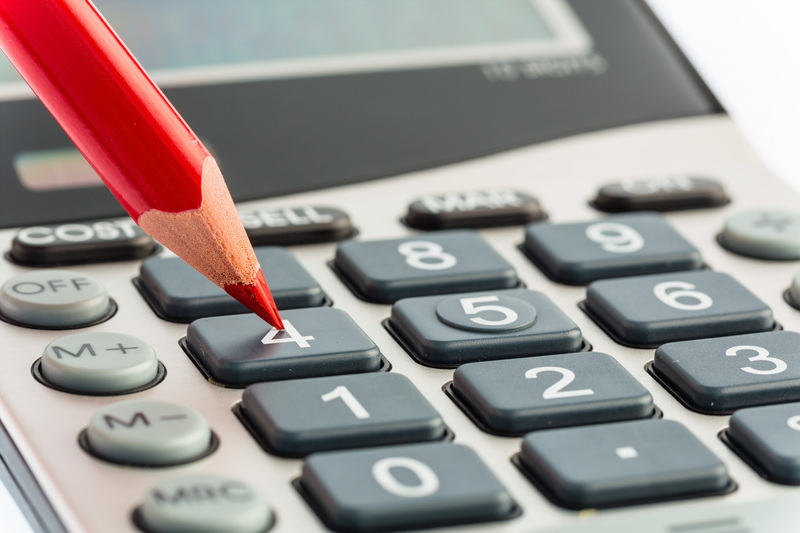The Risks and Reverence of Piano Moving by Yourself
Posted on 13/06/2025
The Risks and Reverence of Piano Moving by Yourself
There's something almost sacred about a piano. It's not just a musical instrument; it's a repository of memories, craftsmanship, and considerable investment. Whether it's an upright grandma passed down or a gleaming grand you saved for years to buy, moving a piano comes with a heavy weight -- quite literally. In this comprehensive article, we'll delve into the many risks and the particular reverence involved in piano moving by yourself. We'll outline potential perils, offer crucial safety tips, and explore why hiring professionals might be the wisest choice for such a daunting task.

Understanding the Gravity: What Makes Piano Relocation Daunting?
Pianos are intricate, delicate, and astonishingly heavy. The average upright piano weighs between 300 and 500 pounds, while grand pianos can tip the scales at over 1,000 pounds. They are engineered with thousands of moving parts -- all of which can be damaged with a single slip.
Components that Complicate Piano Moving
- Weight Distribution: Unlike most furniture, a piano's weight is not evenly distributed. Much of it is concentrated in specific spots, especially where the cast iron plate sits.
- Sensitive Internal Mechanics: Dampers, hammers, keys, and strings can all be knocked out of alignment even with a gentle jolt or tilt.
- Fragile Finishes: Any bump can cause scratches or chips in the lacquer, wood, or veneer.
- Odd Shape: Pianos are big, bulky, and often awkward to maneuver through doorways and tight spaces.
The Real Risks of DIY Piano Moving
Moving a piano by yourself may seem tempting to save costs, but it comes with a multitude of risks. Below, we examine the most pressing dangers associated with undertaking such a task without professional help.
Physical Injury
No musical moment is worth a trip to the emergency room. The principal threat of moving a piano alone is personal injury:
- Strains and Sprains: Lifting too much weight improperly can lead to muscle tears or back injuries.
- Crushed Fingers and Toes: Mishandling a piano can easily result in smashed digits or even broken bones.
- Slips, Trips, and Falls: Navigating stairs, ramps, or uneven floors heightens the risk of hazardous falls.
- Hernias: Overexerting yourself, especially without using the correct lifting techniques, may result in painful hernias.
Damage to the Piano Itself
A single misjudgment can undo years or decades of musical joy:
- Internal Damage: A knocked mechanism or dropped piano can break strings, bend keys, or fracture the soundboard.
- Cosmetic Harm: Chips, dents, or scratches are almost inevitable without proper wrapping and handling.
- Loss of Tuning: Even slight jostling will require a professional retuning after moving -- sometimes multiple times.
Damage to Your Home
- Scraped Floors: Pianos without coasters or pads will gouge hardwood or crack tiles.
- Dented Walls and Door Frames: Navigating tight corners can leave unsightly marks behind.
- Structural Risks: Dropping a piano on stairs or thresholds can cause costly damages.
Financial Liability
Most home insurance plans do not cover damage from attempted DIY moves, leaving you unprotected in the event of a mishap. Repairs to pianos and property can be surprisingly steep.
Why Do People Attempt DIY Piano Relocation?
The allure of saving money, a can-do attitude, or a pressing need to move can be compelling reasons people decide to move a piano on their own. Sometimes, access to professional piano movers may be limited, especially in rural areas.
However, what's often underestimated are the invisible costs -- to your body, your instrument, and your home.
What Goes Into Safe Piano Moving?
For those who, despite the warnings, are determined to take on the challenge of piano relocation by themselves, preparation is vital. Below is an in-depth look at the process and the best practices to reduce, though never eliminate, the risks involved.
Piano Moving Supplies and Tools
- Furniture Dollies: Heavy-duty, four-wheel dollies provide a stable rolling surface for uprights and grands.
- Moving Straps: Shoulder and forearm straps distribute the load and offer better leverage.
- Packing Blankets: Thick coverings protect the piano's exterior from scrapes and bumps.
- Packing Tape and Shrink Wrap: Hold blankets in place and guard exposed edges.
- Tools for Disassembly: Screwdrivers and wrenches for removing parts such as legs and pedals, vital for grand pianos.
- Work Gloves: Improve grip and defend hands from splinters or sharp hardware.
Key Steps for Moving a Piano by Yourself
- Measure Everything: Ensure the piano can physically fit through doors, hallways, stairs, or elevators before attempting to move.
- Plan the Route: Clear all pathways, remove obstacles, and anticipate any tight corners or hazards in advance.
- Secure the Keyboard Lid: Prevent accidental opening to avoid damage to the keys.
- Wrap the Piano: Use moving blankets, and secure everything with tape and wrap to prevent scratches.
- Enlist Multiple Helpers: Even a professional team sends at least three people for upright and usually four or more for grand pianos.
- Lift with Legs, Not Back: Always bend from the knees and use proper lifting technique.
- Use Dollies for Transportation: Avoid dragging the piano, which can damage both instrument and floors.
Special Considerations for Grand Piano Relocation
Grand pianos require partial disassembly and a specialized "piano board." Their massive weight and delicate legs make them especially challenging -- even dangerous -- to move without guidance and plenty of helping hands.
- Remove the pedal lyre and legs first.
- Gently tip the body onto the piano board (heavily padded flat board for transport).
- Secure all loose parts and protect the body with additional padding.
*Without experience, these steps introduce risk not only to the instrument, but to anyone nearby.*
Essential Safety Tips to Minimize the Risks When Piano Moving Alone
- Never rush the process: Slowing down reduces the likelihood of mistakes and accidents.
- Always overestimate manpower needed: Too few people can spell disaster.
- Take frequent breaks: Fatigue rapidly increases the probability of dropping the piano or losing your grip.
- Communicate clearly: All helpers should know commands such as "stop," "lift," or "rotate."
- Have a first aid kit nearby: Prepare for minor injuries or emergencies.
- Don't attempt stairs solo: Navigating steps should always be done with several helpers and with maximum caution.
The Unseen Costs: Reverence for the Piano and Its Craft
Many underestimate the emotional cost of damaging an instrument that may have been in the family for generations. There's a kind of reverence in admiring the craftsmanship, the resonance of each note, and the connection to music and memory.
Attempting to move your own piano puts these irreplaceable elements at risk. Often, the respect and care involved in moving a piano safely speak to the wisdom of trusting professionals who share that same reverence.
Why Consider Professional Piano Movers?
Hiring experts is an investment in your piano's longevity and your own safety. Professional piano movers bring specialized equipment, possess thorough training, and carry insurance to protect both your cherished instrument and your property. They know how to navigate stairs, tight doorways, tough weather, and delicate internal mechanisms.
- Insurance: Professional companies are covered in the event of an accident.
- Experience: Pros have moved thousands of pianos -- no tight corner or flight of stairs is new to them.
- Proper Tools: Pianos require more than muscle; the right equipment makes all the difference.
- Peace of Mind: You won't have to spend your move or your recovery period worrying about what might go wrong.
Common Myths About Moving a Piano Yourself
- "It's just like moving a couch."
- This is a dangerous fallacy. Pianos are heavier, far more delicately balanced, and internally complex. - "A few friends and I can handle it."
- Even with multiple helpers, inexperience can lead to grave mistakes. - "We'll just put it on a dolly and wheel it out."
- Most pianos have casters designed only for minor adjustments, not for rolling across uneven terrain or down ramps.
After the Move: Caring for Your Piano
Regardless of whether you move your piano yourself or hire professionals, it's important to maintain care after the move:
- Let the piano acclimate: Sudden changes in humidity and temperature can damage wood and warp metal parts. Leave the piano for a week before tuning.
- Retune the instrument: Always hire a specialist for a tuning session post-move, as the journey will likely upset tension in the strings.
- Inspect for hidden damage: Check legs, pedals, and body for any cracks, broken pieces, or loosened hardware.

Conclusion: Should You Attempt to Move a Piano by Yourself?
There's no doubt that the risks of piano moving by yourself far outweigh any potential savings. Physically dangerous, emotionally taxing, and all too often catastrophic for the instrument -- the job truly requires the utmost respect, experience, and caution. Most experts strongly advise trusting your piano to specialized movers who have the equipment, skills, and reverent touch required to preserve such a treasured instrument.
If you decide, despite the warnings, to undertake piano relocation on your own, prepare rigorously, gather adequate help, and respect the significant hazards involved. After all, a piano is not just heavy -- it's heavily cherished.
Frequently Asked Questions About Self-Moving a Piano
What is the main risk of moving a piano by yourself?
The principal risk is serious personal injury, including back strains and crushed limbs, as well as severe damage to the piano and property.
Is it ever safe to move a piano alone?
It is generally never safe or advisable to move a piano alone. Always enlist multiple helpers; even then, consider professional assistance.
What's the best way to protect a piano during a move?
Use thick moving blankets, secure all loose items, and use proper equipment like dollies and straps. Still, even the best DIY methods cannot match a professional's know-how.
How soon should I tune my piano after a move?
Wait at least 1-2 weeks for the piano to acclimate to the new environment before scheduling a tuning session.
Can regular movers safely handle pianos?
Most regular movers lack the specialized tools and experience to move pianos safely. Always opt for a company with verified experience in piano relocation.
Moving a piano is a task of physical, emotional, and musical gravity. Approach it with the respect it deserves, and your beloved instrument will continue to make music for generations.



